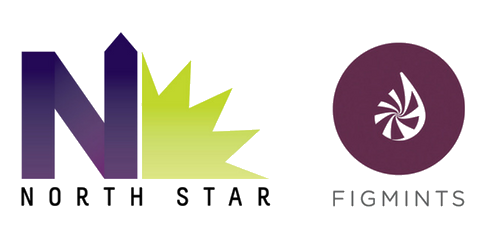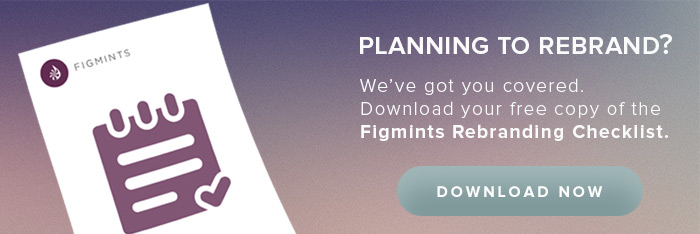
BRAND STRATEGY
Great brand strategy revolves around clearly articulating your differentiation against competitors. You must continually push these differentiators to customers. One of the best ways to achieve this is by aligning your branding with your unique value propositions.
CREATE A NEW VALUE CURVE
The Blue Ocean Strategy Canvas advises that you compete on attributes that your competitors have failed to serve. For years high growth companies have entered markets by first catering to an underserved niche market. Netflix started by mailing cult classic films that you couldn’t get at Blockbuster, Vimeo focused on professional videographers unlike YouTube, and Tesla started making luxury vehicles instead of competing with electric low-end hybrids. This strategy of differentiation is key for disruptive start-ups and established companies.
COMMUNICATE EFFECTIVELY
It is important to communicate these differences to consumers. Branding is key to successful customer loyalty. To resonate with your customer, you have to speak their language. If you are targeting corporate clients, your branding and messaging should align with this persona. Your entire brand: logo, name, print, ads, web, and media should push why you are different and thus better than the competition.
7 TERRIFIC BRAND STRATEGY EXAMPLES
Below are seven examples of competing brands that have tailored their marketing to accentuate their differentiation to the consumer.
1) SIMPLE VS. BANK OF AMERICA
Traditional banks have many branches and were slow to create easy to use mobile apps. Simple has no branches yet they focused on their great mobile app at a time when most banks apps were clunky and cumbersome. Traditional customers valued services such as home loans, CDs, and bank tellers. Simple focused on younger more tech savvy customers and arguably created the first 21st-century bank.

Simple – All electronic consumer banking

Bank of America – Second largest bank in the United States
2) PRIUS VS. TESLA
Tesla decided to break into the electric vehicle (EV) marketplace with a luxury sports model. At this time, the electric vehicle market valued economy over form and function. Tesla decided not to compete with the Chevy Volt or Toyota hybrids and instead go after the high-end market.

Tesla
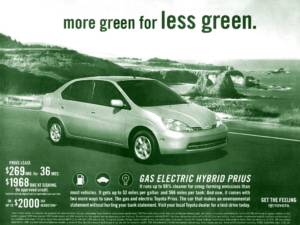
Prius
3) DELTA VS. JETBLUE BRANDING
As airlines like Delta stopped serving peanuts and reduced leg room JetBlue entered the market touting their gourmet snacks and extensive leg room. Though they did not have international flights or an extensive frequent flier program, they broke into the market focusing on their friendly service, snacks, and legroom. Every part of their branding pushed to communicate the hospitality and fun of flying, while big airlines like Delta continued to push their message towards business travelers.

JetBlue
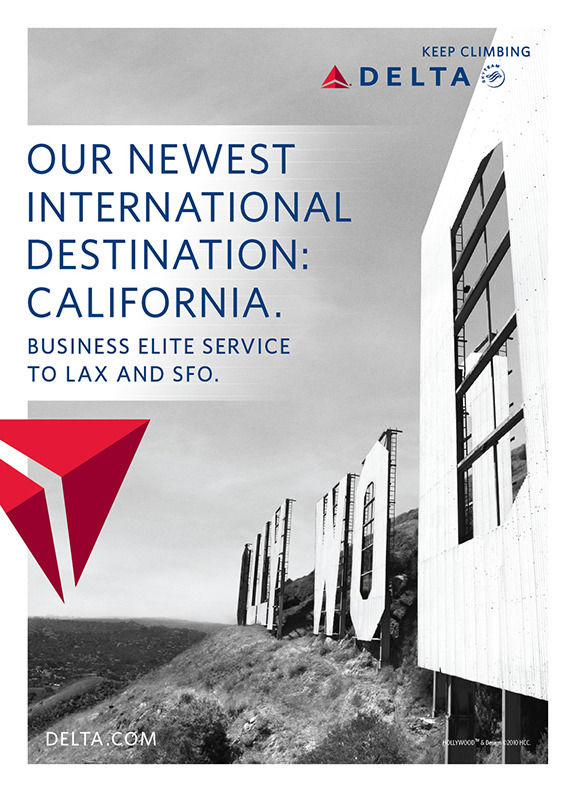
Delta
4) CHIPOTLE VS TACO BELL
For years, Taco Bell held the largest market share for fast food Mexican restaurants. Consumers looked to Taco Bell for years for cheap Tex-Mex food. Chipotle stormed the market by competing on quality instead of price. Chipotle differentiated with great branding. From clever jokes on their soda cups to the hip urban atmosphere, the entire experience works to build brand equity.
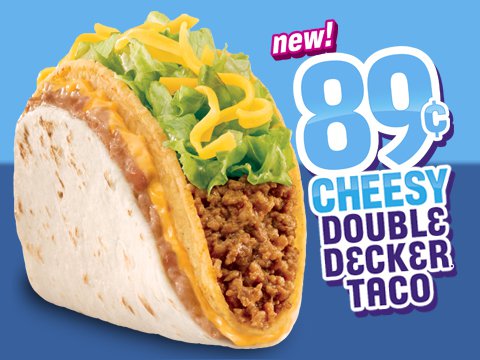
Taco Bell

Chipotle
5) GILLETTE VS DOLLAR SHAVE CLUB BRANDING![]()
Gillette has become one of the most recognized brands built on the pillars of professional and masculine razors. Dollar Shave Club entered the market attacking Gillette on price. The name alone shows that they are pushing consumers towards low cost. However, DSC also competes on quality. They further differentiated by creating messaging that is far from Gillete’s professional advertisements – a humorous take that has made the company a major player in the grooming industry.

Gillette
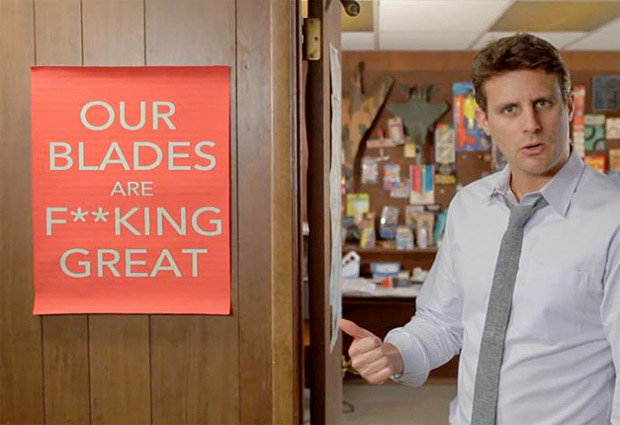
Dollar Shave Club
Trader Joe’s vs. Whole Foods
At first Trader Joe’s and Whole Foods seem to have very similar brand positioning. Both are grocery stores with boutique offerings for a more choosy culinary consumer. But if we dig a bit deeper, we will find that they actually have distinctly different positions.
Trader Joe’s has small stores and this means, unlike Whole Foods they must choose what products to put on their shelves. The result is a hodgepodge of hard to find and exotic goods. You can find Korean scallion pancakes right next to tamales. There is a health focus but also a fun focus. It’s meant to be a treasure hunt. And their branding reflects this. The stores are decorated in a fun nautical theme. Employees wear Hawaiian shirts and loudly shout when there aren’t enough cashiers.
Whole Foods focuses on a more affluent market and their branding reflects that. The branding is crisper and less fun. Their product displays are more refined and they offer more health conscious foods. Their main color–green–reflects the organic side of the brand. Trader Joe’s, on the other hand, has fun lettering and bright red colors.
Both companies have fantastic branding. One is not better than the other. They both organize all their activities to re-enforce their brand message. Building loyalty with their target personas.
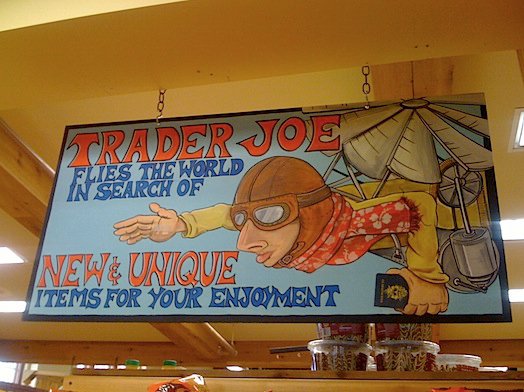
Trader Joe’s Advertisement in Store
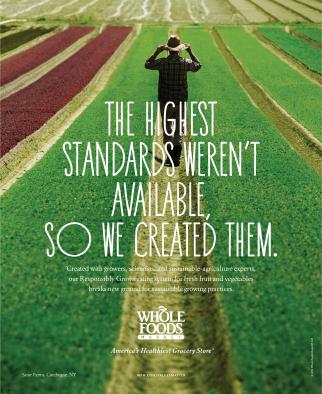
Whole Foods National Advertisement
Lyft vs. Uber
Lyft and Uber are both ride-share applications that have incredibly similar offerings yet radically different brand positioning.
Uber pioneered their market. They started with just black executive Lincoln Towncars, with their jet black branding and sleek logo. They were exclusive, cold, and luxurious. Over time their offerings became more diversified and products like uberX and UberPOOL allowed anyone to call a ride and get picked up for a few dollars by a Prius.
On the opposite side of the spectrum came Lyft. Originally cars were adorned with a bright pink fuzzy mustache. Riders were told to sit in the front and make conversation with their drivers. And drivers were billed as being “fun and interesting”.
Lyft came in knowing they had to be different. Though they followed much of what Uber had pioneered. They took their branding and culture in the opposite direction.
This helped make them distinct and different. Not Uber. Not only did this make them easier for consumers to identify, it ultimately benefited them as Uber was slammed by the press for it’s cold, unfriendly, and ruthless sheen.
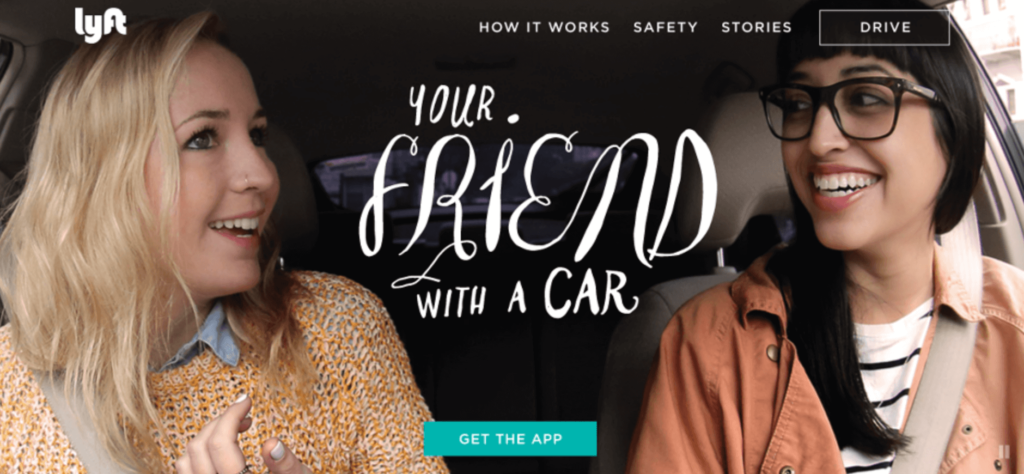
Lyft Homepage
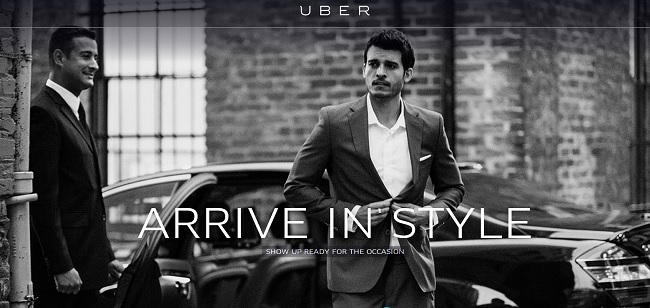
Uber Homepage
Why Branding Matters
Great identity helps shape consumer perceptions and decision-making behavior. A great brand aligns with your business’s larger market strategy and consumers needs. Strong brands cast a vision and communicate the unique value of the brand in a crowded marketplace.

